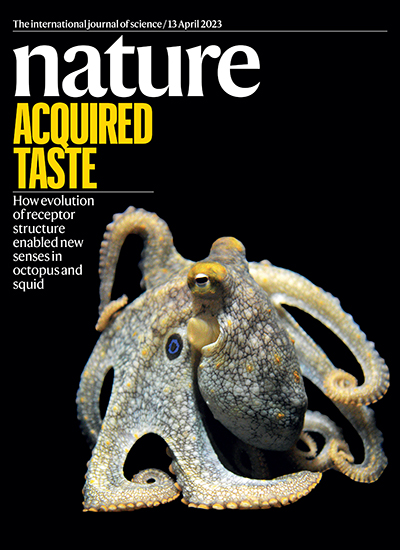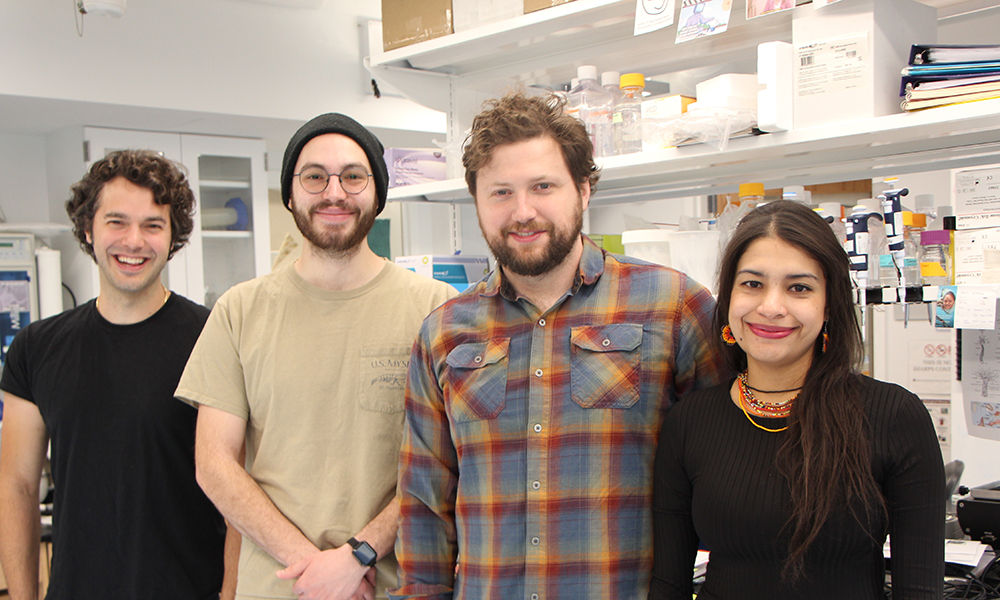Cephalopods like octopus and squid are well known for their repertoire of sophisticated behaviors governed by their elaborate nervous systems that are comparable in size to complex vertebrates, but with radically different organization. Cephalopods diverged from basal molluscs such as slugs and snails, and the course of their evolution is characterized by striking examples of convergent and divergent evolution in relation to vertebrate organisms. Yet, molecular innovations that give rise to novel behaviors among these fascinating animals remain relatively unexplored.
We recently discovered a family of octopus-specific chemotactile receptors (CRs) that are used by octopus arms to detect poorly-soluble natural products, thereby defining a form of contact-dependent, aquatic chemosensation (van Giesen et al, Cell, 2020). CRs form ion channel complexes to mediate diverse signal detection and filtering. Furthermore, distinct chemo- or mechanosensory cells express specific receptors and exhibit discrete electrical activities to support peripheral-information coding and complex chemotactile behaviors suited to the uniquely-distributed octopus nervous system.
As a critical interface between ecological niche, complex neural processing, and sophisticated behavior, sensory receptors represent a key site for evolutionary innovation. To probe origins of biological novelty, we took a comparative approach and asked how octopus and squid sense their respective marine environments. While the octopuses explore hidden seafloor crevices using arms equipped with “taste by touch” chemotactile sensation, squid are ambush predators that strike and capture unsuspecting prey with their eight arms and two long tentacles. Because octopuses use contact-dependent chemosensation to find prey, we wondered if squid might use arm chemoreception for their distinct ambush predation strategy. If so, how is the chemotactile sense in squid specialized for use in this distinct predatory strategy? This curiosity led to unexpected results, requiring a comprehensive analysis and a uniquely synergistic collaborative effort between the Bellono and Hibbs groups: We discovered new families of sensory receptors, defined how they drive distinct behaviors in different organisms, and showed how molecular adaptations (revealed in newly determined cryo-EM structures) enable divergent behaviors and uncover evolutionary chronology. The study resulted in paired manuscripts published at Nature (1) and Nature (2).
The first of the pair is titled “Structural basis of sensory receptor evolution in octopus” (PDF). Briefly, we present the first structure of an octopus chemotactile receptor, which is used by its arms for “taste by touch” exploration of the seafloor. CRs share the highest sequence identity with nicotinic acetylcholine receptors, yet have diverged to detect diverse hydrophobic molecules for contact-dependent chemosensation in aquatic environments. Indeed, other chemosensory receptors are related to neurotransmitter receptors, including Ionotropic Receptors (IRs) that resemble glutamate receptors, suggesting similar transitions underlie other sensory systems. CRs therefore represent a striking example of biological novelty and a unique and powerful system for understanding principles of sensory receptor evolution and adaptation in the context of a lineage specific trait. Together with evolutionary, biophysical, and behavioral analyses, we show how strikingly novel structural adaptations facilitate the receptor’s transition from an ancestral role in neurotransmission to a new function in chemotactile sensation of poorly soluble environmental agonists.
The second study is titled “Sensory specializations drive octopus and squid behavior” (PDF). Here we focus on squid, a cephalopod with a wildly different ambush predation strategy. We combine genetics, physiology, and behavior to discover a new class of ancient chemotactile receptor, obtain its structure with a novel agonist bound, and perform evolutionary analyses to relate adaptations in squid receptors to more elaborate expansions in octopus. We then carried out phylogenic, structural, and functional analysis to place chemotactile and ancestral neurotransmitter receptors in an evolutionary timeline to elucidate mechanisms of adaptive behavior.
Collectively, these studies provide a basis for understanding how subtle structural adaptations can drive new organismal behaviors suited to specific ecological contexts. Indeed, cephalopod CRs offer a rare lens into the evolution of sensation as they represent the most recent transition from neurotransmitter to environmental receptors across the animal kingdom. Thus, these unique cephalopod receptors lay a foundation for the mechanistic understanding of major functional transitions in deep evolutionary time and the origin of biological novelty.
by Nick Bellono and Corey Allard
Octopus bimaculoides (photo by Anik Grearson)




